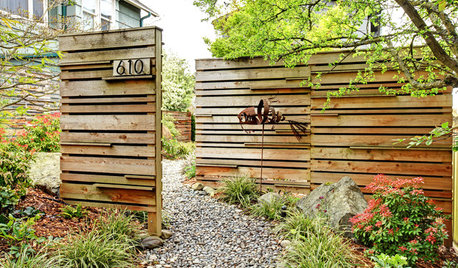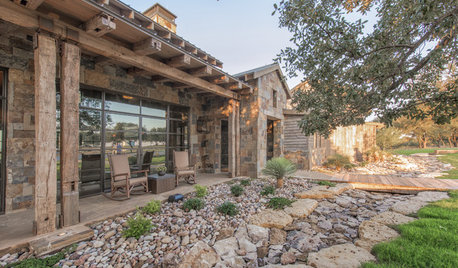Weeping willow (pics) - advice needed
greenman28 NorCal 7b/8a
15 years ago
Related Stories

GARDENING AND LANDSCAPINGGrow a Lush Privacy Screen
No need to wait forever for patio privacy the green way. These 10 ideas will get your screening up and running in no time
Full Story
FENCES AND GATESHow to Choose the Right Fence
Get the privacy, security and animal safeguards you need with this guide to fencing options
Full Story
KITCHEN DESIGNHow to Lose Some of Your Upper Kitchen Cabinets
Lovely views, display-worthy objects and dramatic backsplashes are just some of the reasons to consider getting out the sledgehammer
Full Story
DECORATING GUIDESHouzz Tour: Much to Like About This Traditional Beauty
New elements mix well with old in a New Jersey family’s elegant and comfortable colonial revival home
Full Story
FALL GARDENING11 Trees for Brilliant Fall Color
Give your landscape the quintessential look of autumn with the red, orange and yellow leaves of these standouts
Full Story
MONTHLY HOME CHECKLISTSYour Fall Home Maintenance Checklist
Prep your house and yard for cold weather with this list of things to do in an hour or over a weekend
Full Story
LANDSCAPE DESIGNTo Manage Stormwater Sustainably, Understand Your Site
Follow this guide to learn how water moves through your landscape and how best to manage it
Full Story
CHRISTMASReal vs. Fake: How to Choose the Right Christmas Tree
Pitting flexibility and ease against cost and the environment can leave anyone flummoxed. This Christmas tree breakdown can help
Full Story
LANDSCAPE DESIGNHow to Choose a Fence That Feels Right and Works Hard
Making a thoughtful fencing choice now can create happiness for years to come
Full Story








lucy
greenman28 NorCal 7b/8aOriginal Author
Related Professionals
Allentown Landscape Contractors · Burlington Landscape Contractors · Belmont Landscape Contractors · University City Landscape Contractors · Vermilion Landscape Contractors · Boise Decks, Patios & Outdoor Enclosures · Bowie Decks, Patios & Outdoor Enclosures · Huber Heights Decks, Patios & Outdoor Enclosures · Liberty Decks, Patios & Outdoor Enclosures · Manchester Decks, Patios & Outdoor Enclosures · Mobile Decks, Patios & Outdoor Enclosures · North Aurora Decks, Patios & Outdoor Enclosures · Spokane Decks, Patios & Outdoor Enclosures · Verona Decks, Patios & Outdoor Enclosures · Westford Decks, Patios & Outdoor Enclosuresgreenman28 NorCal 7b/8aOriginal Author
lucy
greenman28 NorCal 7b/8aOriginal Author
greenman28 NorCal 7b/8aOriginal Author
lucy
greenman28 NorCal 7b/8aOriginal Author
greenman28 NorCal 7b/8aOriginal Author
greenman28 NorCal 7b/8aOriginal Author
height-thief
greenman28 NorCal 7b/8aOriginal Author
greenman28 NorCal 7b/8aOriginal Author
height-thief
greenman28 NorCal 7b/8aOriginal Author
greenman28 NorCal 7b/8aOriginal Author
greenman28 NorCal 7b/8aOriginal Author
lucy
greenman28 NorCal 7b/8aOriginal Author
greenman28 NorCal 7b/8aOriginal Author
greenman28 NorCal 7b/8aOriginal Author
head_cutter
greenman28 NorCal 7b/8aOriginal Author
greenman28 NorCal 7b/8aOriginal Author
dentalstudent
greenman28 NorCal 7b/8aOriginal Author
dentalstudent
ryan_tree
tapla (mid-Michigan, USDA z5b-6a)
ryan_tree
greenman28 NorCal 7b/8aOriginal Author
ryan_tree
greenman28 NorCal 7b/8aOriginal Author